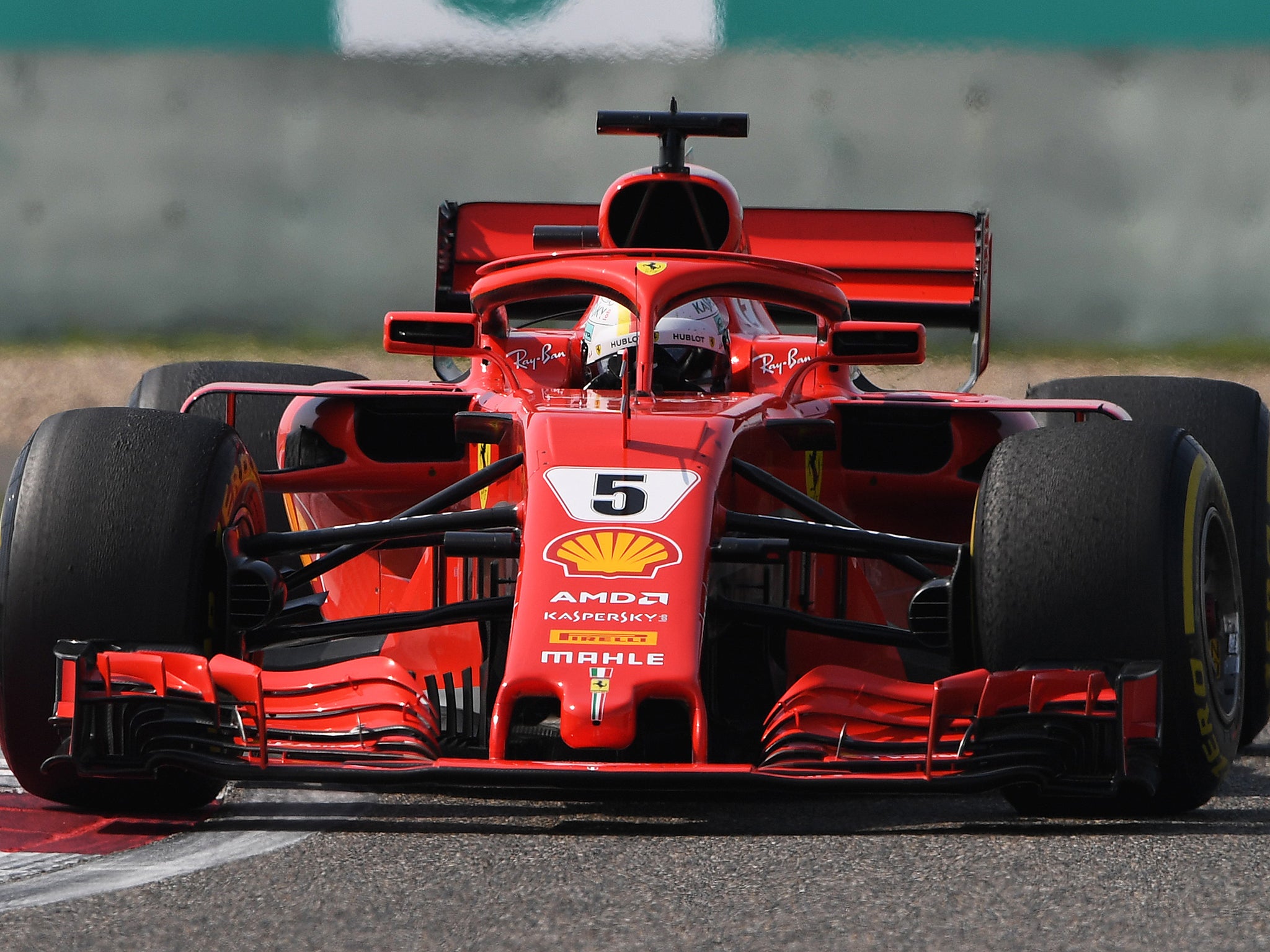FIA hit back at Sebastian Vettel to defend safety car timing after being ‘taken out’ of the Chinese Grand Prix
Vettel believes the safety car period midway through Sunday’s race cost him a chance of victory and feels that something should be done so that the leaders aren’t compromised

FIA race director Charlie Whiting has defended the use of the safety car during Sunday’s dramatic Chinese Grand Prix after Sebastian Vettel claimed that it took him “out of the race” due to the timing of its deployment.
Vettel had surrendered the lead to Mercedes driver Valtteri Bottas during the first pit stop phase, but was right on the Finn’s tail when a collision between Toro Rosso drivers Brendon Hartley and Pierre Gasly triggered a safety car period.
But the full course caution was triggered just as Bottas and Vettel passed the pit lane entry, preventing them from choosing to pit for fresh tyres and leaving them vulnerable to those behind who had time to stop for fresh rubber – namely Daniel Ricciardo and Max Verstappen. The charging Red Bulls were essentially gifted a free stop as the full safety car allowed them to catch up with the pack, as opposed to a virtual safety car that would have maintained the advantage that the leading pair had built up.
Chinese Grand Prix in pictures
Show all 20"Obviously the timing of the safety car was bad for Valtteri and myself, because we had no chance to react," Vettel said. "The safety car was caught almost straight away, so basically we were taken out of the race there, and didn't have the choice to jump on fresh tyres or stay out.
"I understand if something happens and you have to react straight away, then you can't always respect where cars are relative to each other.
"But we had two laps of the debris on the track, so why not call the safety car half a minute sooner and then everybody has the chance to decide whether they pit or not?”
"In my point of view it's not right to send it when you actively change the race."
Off the restart, Verstappen and Ricciardo begun to scythe their way through the field, although Verstappen’s antics attracted widespread criticism as he went off while attempting to pass Lewis Hamilton before colliding with Vettel after challenging for second place, taking both of them out of podium contention.
Ricciardo was able to negotiate the Finnish pair of Kimi Raikkonen and Bottas to take the win, but there was no doubt that the Australian benefitted greatly from the timing of the safety car as his new tyres gave him a considerable advantage over those in front on old tyres.
But Whiting, the man in charge of actioning the safety car in such an event as the one seen on Sunday when debris was left across the track from the two Toro Rossos, defended the timing of the deployment and insisted that there is no provision to consider where the leaders are on the track when it comes to driver safety.
"I don’t look to see who is going to be advantaged or disadvantaged," Whiting said. "It’s a little bit of a mystery to me why this has all come into sharp focus, because we’ve had the VSC [virtual safety car] since 2015, we’ve had the safety car for 20 years, and we know that in every intervention there will be winners and losers.
"If we have to sit there and work out who is going to be advantaged and work it so everyone has exactly the same chance... we don’t have time for that. It’s not our job to do that.”
Gasly was heard on the team radio calling for a safety car period, although that was no surprise given he had to pit to have the damage repaired regardless and that neutralising the race would stop him losing as much time. Whiting went on to reveal that a number of teams had contacted him, but while that is taken into consideration, it is not the deciding factor.
"I think we wanted to make sure it was necessary,” Whiting added. “We didn’t want to do it just on the basis that three or four teams called us to say we need a safety car, which happens nearly every time.
"I asked the clerk of the course if they could get it in a gap in the traffic, and he said: ‘No, it’s too much.’ We had to make sure it was justified."
Subscribe to Independent Premium to bookmark this article
Want to bookmark your favourite articles and stories to read or reference later? Start your Independent Premium subscription today.

Join our commenting forum
Join thought-provoking conversations, follow other Independent readers and see their replies